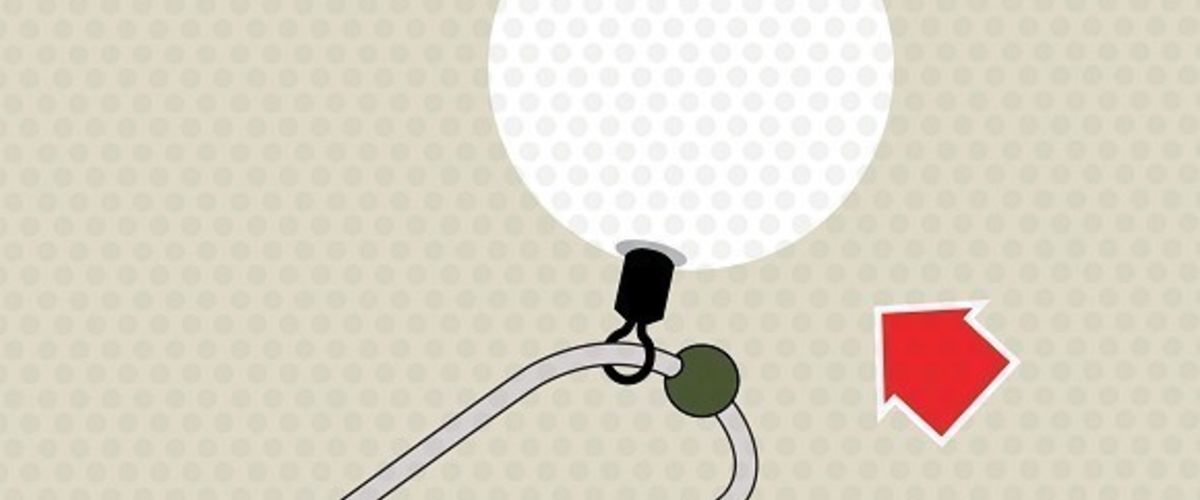
How to attach your hookbait in 6 different ways
There's various ways and each way affects how a rig works. We show you six ways here from the KD rig to the Large Blowback Ring Rig
Type of attachment: Swivel On Shank
Most suited rig set-up: Unlike the ring on the shank, this is well suited to all type of hookbait options – i.e. pop-up and bottom bait presentations.
Advantages: A swivel provides far more movement than a straight ring arrangement and marginally better separation allowing it to be used more effectively with bottom baits. As with the ring on the shank, the hook beads can be positioned at different points to create different mechanics. If the swivel is allowed to run down to the eye, excellent anti-eject properties can be achieved.
Type of attachment: Large Blowback Ring Rig
Most suited rig set-up: The anti-eject potential of the large D is further enhanced by the use of a large bait. Try it with a double bottom bait or a snowman presentation.
Advantages: The range of movement of the bait is greatly exaggerated by the use of a large ring that will actually pass over the eye of the hook. Because of the mechanics this creates, a pricked fish that blows the ring past the eye will struggle to shed the hook. If it does, however, the rig is then rendered virtually useless as it cannot ‘reset’ itself although it is possible to tell if you have been ‘done’ by a fish.
Type of attachment: KD Rig
Most suited rig set-up: The KD is best used in conjunction with a bottom bait or with a pop-up pinned down by the use of a shot on the Hair rather than the hooklink itself.
Advantages: Because the Hair exits the Knotless Knot by the eye of the hook rather than further up the shank as in a standard Knotless Knot, the hook tends to hang point-down. When a fish sucks the bait in, this puts the hook point in prime position to catch in the bottom of the mouth. It is most suited for use over a clean bottom with the bait fished on or very close to the lakebed.
Type of attachment: Long D Rig
Most suited rig set-up: This is an excellent boilie rig set-up and lends itself perfectly to both pop-up and bottom baits. Below are the advantages to using it…
Advantages: A Long D allows the bait to travel up and down the hook shank. By altering how far up the shank the whipping continues, it is possible to finely tune the angle at which the hook sits. Often used with pop-ups, a Long D section is also very effective when used with a bottom bait, and has excellent anti-eject properties as the bait travels right down to the eye of the hook.
Type of attachment: Silicone On Bend
Most suited rig set-up: This can be used with any bottom bait or pop-up weighted by a shot on the Hair. When fishing the silicone right round the bend, a longer Hair is preferable.
Advantages: This is a simple way to improve the standard Knotless Knot. Trapping the Hair with silicone allows you to alter the mechanics of the hook and encourage it to turn more readily. Used in conjunction with a long Hair, the hook falls to the bottom of the mouth as the fish mouths the bait and the bottom lip touching the hooklink will turn the hook. This rig doesn’t rely on the fish ejecting the bait to prick it.
Type of attachment: Short D Rig
Most suited rig set-up: This is a great rig for use with very stiff hooklink materials. Best used with a pop-up, it is ideal for Stiff Hinged and Chod presentations.
Advantages: This type of ‘D’ allows the bait lots of movement whilst remaining tangle-free. It also adds the vital element of movement to otherwise stiff rigs. Using a very small ‘D’ keeps the bait close to the eye of the hook and the point hangs at a very aggressive angle. Hook holds are usually central in the bottom lip, the perfect and most secure area in the mouth to hook a carp.








